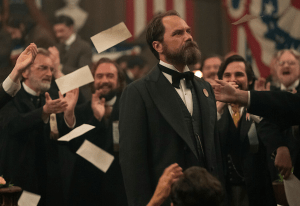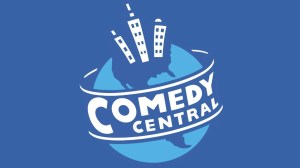Just like last night’s episode of The Walking Dead, this month’s issue of Justice League International took fans for an emotional ride that included chaos, fighting and death. They lose a member, their charter and a little of their identity–and as usual, writer Dan Jurgens joined us to talk about the issue.Remember, spoilers ahoy! Don’t read this unless you’ve already read the book!What was the thinking behind Gavril being the character to die? Is it just to do with the idea that the Rocket Reds are a bit of an anachronism?It’s part of creating the reasoning and rationale for why this team will stay together– or not. Does loss motivate them? Or does it take them down the road of not seeing the benefit in trying to bond as the JLI?As for Gavril specifically, I don’t know that the Rocket Reds are an anachronism. Sure, that’s partially true, as the concept probably worked better when the Soviet Union still existed. But I think there is still source material there for a story.Certainly there will be some people who notice that this is kind of last in/first out situation, in that Gavril was a new character.I certainly don’t think of it that way, nor did I approach it that way. For me, it was more a question of going where the story took us. In many ways, this is all about the actual difficulty of forming a team.In comics, I think the act of forming a team has always been undersold. It’s sort of like, “Hey, kids! Let’s be a superhero team!” “Awesome! It’ll be cool! We’ll get a clubhouse and everything!”Life simply doesn’t work that way. Even if a sponsor, like the United Nations, pulled a group of people together, there’d be growing pains. It isn’t as easy as it seems.Even the Beatles had to change drummers, you know. #petebestSome would say that killing ANY character this soon after the relaunch really begs the question: Why bring them into the new universe at all?As I said above… the overall story is about the difficulty of bringing a team together. Many roads can be taken to tell that story. One of those roads is death.All that said–what are the odds we still haven’t seen the last of that little interface he had with the alien tech last issue?Interface? What interface? All I saw was a yellow light…Going on the assumption that I made last issue–that his armor would have been infected by that interface…does that now put Skeets at risk?Perhaps. Or it’s possible that Skeets might make a startling discovery of his own. Or none at all. Or might just go to an ATM to withdraw cash. Hard to tell at this point.Between the sequence at the end of the last issue and the “Before they kill again” moment here, it seems as though Batman has some kind of agenda that more or less means making himself the enforcement arm of the League. Is that reading too much into it?I’d put a different slant on it. I think it’s fair to say that Batman sees the potential in the individuals and need for the group overall. He doesn’t want to see it fail.Losing Briggs and Esposito is arguably more significant than losing Gavril, not only because Rocket Reds have traditionally been roughly as replaceable as Red Tornado bodies, but also because of what we’re already seeing here–the factions in the UN who don’t like the League now have a leg up. Did that develop as the first arc wore on or did you know ahead of time that these characters had a very short lifespan?There was a general thought as to how this would play out, though not with that absolute specificity. I’ve always thought the idea of normal civilians hanging around a superhero team is loaded with danger. It’s somewhat like civilian reporters covering a story in a combat zone. It’s a dangerous environment.It can’t be avoided; I have to ask. With OMAC joining the team (according to solicited covers) and the loss of Briggs and Esposito, what are the odds we’ll see a new UN liaison for the team? Max is free…!Max who?Esposito’s father is the latest in a line of random bystanders who go after superheroes for their perceived shortcomings recently, starting with Civil War. What do you think makes telling that story–the story of everyday people’s exasperation with their heroes–such a compelling one for writers to explore?There’s a chicken/egg type of question here. Do superheroes make the world safer because they stop a threat? Or do they make it more dangerous because they attract the threat?That’s a constant point of contention and stress. In this case, the JLI was put together to be a group of defenders offering protection, and people around them died.Lightweaver’s build and even what we’ve seen from his powers don’t really scream “powerhouse,” but the last time I can remember the League looking this bad all at one time was after Doomsday touched down in Ohio (which may or may not have happened now, I know). Is he someone we’ll be seeing a lot of?Yes, you’ll be seeing more of him. As well as the person he was communicating with.Batwing’s arrival begs the question: Is he here at Bruce’s request or because Lightweaver is one of the baddies he’s after in Africa? While his body appears to be solid light, there’s something about him that looked African-American to me even before Batwing showed up.Yes, Lightweaver is African-American. However, Batwing is on the scene for two different reasons, to be revealed next issue!









